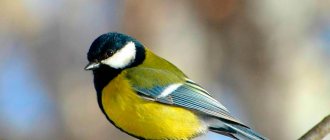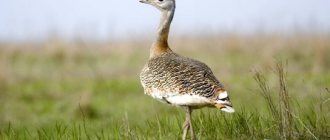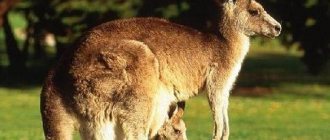- Reports and messages
- Birds
- Swallows
The most common of our swallows is the barn swallow, which is also called the killer whale swallow.
Her wings are straight, rather long, sharp, and her tail is deeply notched. The color of her back, when viewed from a distance, is completely black, and her underside is light. There is a rusty spot on the throat, and a dark belt on the chest. Males measure about 18 cm and weigh 17 grams, females - 15 cm and 16 grams. This bird is found everywhere in Europe.
Our swallow nests and flies away for the winter. Birds winter in Africa, India, and Burma. Sometimes, it is believed - by chance - even on the island of Borneo and the Philippine Islands.
In spring, single birds or small flocks of them first arrive to us, and birds appear en masse after a few days. Males usually arrive first, and females come later, when the arrival becomes widespread.
The barn swallow has become closely associated with humans and now its nests are found mainly in human settlements. But she usually avoids large cities. It prefers small settlements, where it usually chooses small open buildings for nesting: terraces, canopies.
The bird does not form large colonies, but almost always, even in a small village, several pairs of killer whales live, and when the chicks leave the nests, the flocks of swallows increase to several hundred.
Killer whales return to the same place for many years in a row, but usually they do not occupy the old nest, but build a new one. The male arrives first, and the female joins later. Often pairs of swallows are located nearby and the birds get along easily. Swallows often settle very close to human habitation.
Swallows prefer dark rooms for nesting, often with a narrow entrance. The nest is almost always placed under the ceiling. They build it from wet earth. Lumps of earth are moistened with saliva and placed with their sharp ends inward, and straws and blades of grass are placed between them. The inside is lined with feathers and soft grass. Building a nest usually takes 4-5 days, but sometimes it can take 10 days.
There are usually 4 or 5 eggs in a clutch, but there are from 2-3 to 7 eggs. Barn swallows almost always have two clutches per year, which are incubated only by the female. Typically, incubation takes 14-16 days, but in cold weather it can take up to 17-18 days. Young birds from the first clutch usually fly out of the nest in late June - early July. Having flown out of the nest, young swallows sit on twigs or blades of grass for several more days and are fed by their parents. Then the young gather in flocks and usually stay in meadows near rivers, along the banks of lakes and swamps.
Young eggs from the second clutch appear en masse in August. They join flocks of June young and stay together until they fly away.
Barn swallows feed only on animal food: flying insects of various sizes, including butterflies and dragonflies. Swallows obtain food both near the nest and often far from it. Sometimes it also catches insects sitting on the walls. Swallows have a high energy expenditure, digestion occurs very quickly, and therefore swallows are busy almost the entire day getting food. In order to drink water, they do not sit on the shore, but scoop up water in flight: they fly on the water itself, raising their wings and stretching their necks down.
Swallows: description
Today it is known that there are up to 80 species of swallows and other representatives of this family. These birds are found in almost all corners of the globe where habitat conditions are suitable for them.
Interesting to know! Due to the unique structure of their body, swallows are considered quite maneuverable birds. During the flight, these birds are able to catch even the fastest insects.
The relatively wide mouth allows the swallow to feed directly in flight.
Appearance
Each species of swallow has some differences, although regardless of the variety, they have many similar features, such as:
- The plumage in the back area has a characteristic metallic tint.
- Wide chest.
- The beak is relatively short, but wide at the base.
- The mouth is quite large.
- It is not easy to distinguish a female from a male.
- The plumage fits tightly to the body.
- The claws are long and the fingers are quite tenacious.
- The plumage color of chicks is the same as that of adults.
Swallows are small birds with a small wingspan, while, compared to body length, the length of the wings is somewhat longer. The swallow's wingspan does not exceed 35 centimeters.
Interesting to know! The limbs of these birds are poorly adapted to moving on the ground. Therefore, if a bird walks on the ground, it does so clumsily, although sometimes circumstances arise that swallows have to fall to the ground.
Despite the fact that the swallow has relatively long wings, they are narrow, and the tail is more like a fork. As a rule, the swallow's back is black, and its belly is either white or light beige. The color of such birds also depends on the species characteristics and can be different.
Lifestyle and behavior
Swallows are very common migratory birds that prefer to be diurnal. They arrive somewhere in the middle of May and immediately begin building their nests. After this, they immediately begin to lay eggs.
The process of incubating the eggs takes another couple of weeks, and the chicks are fed for 3 weeks. By the time they fly to warmer climes, the young animals become completely independent.
The singing of a swallow cannot be called simple, since it makes sounds of different tones, reminiscent of the usual chirping of a bird, turning into a trill. Regardless of the species, swallows lead a social lifestyle, so they can form numerous groups.
Interesting to know! Basically, swallows settle near natural water sources. Here they find both building material for their nests and food.
You can often observe how a flock of swallows is located on power lines or on other hills. They also build nests in colonies (although not always), with each pair ready to defend its living space.
How long does a swallow live?
According to experts, swallows live on average about 4 years, although there have been ringed individuals that have already managed to live 8 years.
ALL ABOUT VILLAGE AND CITY SWALLOWS.
Migration
The main reason for seasonal migration is the lack of insects. Based on this sign, we can conclude: when swallows arrive, ticks and mosquitoes will soon bite. For a bird of such small size, the swallow travels impressive migratory distances. The birds tend to migrate in breeding flocks that sometimes number several hundred thousand. The migration can last several months, so the migratory route of the swallow will always lie in areas where there is a high level of flying insects. Return arrival time depends on the severity of weather conditions.
Swallows are among the first to migrate in the fall. They congregate on wires and bare branches, in wetlands or near lakes and rivers. Along the way they spend the night in the reeds. Families of swallows recognize each other's calls and stay together throughout migration.
These birds are very tenacious and prolific, their number amounts to several tens of millions of individuals and remains at a stable level, so there is currently no threat to their existence. The only drawback is the expansion of populated areas and deforestation, but swallows coexist well in cities and villages with people. Some people deliberately make their homes attractive to these birds so that the swallows eat pests in their gardens.
Types of swallows with photos
The most common types are:
Barn Swallow (Hirundo rustica)
This species is distinguished by its black dorsal area with a bluish tint. The wings are painted the same color, while the chest area and abdomen are distinguished by a whitish-pink tint. This type of swallow is popularly called “killer whale.” As a rule, for nesting sites they choose areas located near human habitation. They build nests under the roofs of both residential and non-residential buildings, as well as various outbuildings. They arrive after the end of the winter period, with the onset of spring warmth.
City swallow (Delichon urbicum)
This species differs from barn swallows in having a lighter belly. The city swallow, or "swallow" as it is popularly called, is more common in colder, northern regions.
Ground swallow
Or common swifts differ from the rest of their relatives in that they use earthen burrows dug on their own as nests. It should be noted that their life mainly takes place in flight. They descend to the ground to lay eggs and then feed their offspring.
Tree swallows (Tachycineta bicolor)
This species of swallow is characterized by the presence of very bright black plumage, with a very attractive purple tint.
The swallow swallows are the most interesting because they live exclusively within South America. This species of swallow is also interesting because the birds lead a sedentary lifestyle and do not fly anywhere, compared to many other species.
It is important to know! The purple wood swallow, which lives within North America, is considered the largest, since its body length is about 20 cm. Due to the fact that the chicks of this species have a purple color in their plumage by winter, this species received this name.
Antcatcher swallows primarily feed on colonies of tree ants, although their diet includes other insects in addition to ants. These swallows have quite strong and sturdy legs.
Natural habitats
Swallows are distinguished by the fact that they spend a lot of time in the air, expending a lot of energy and strength. Therefore, they need to constantly feed to replenish their energy reserves. Most species of swallows live in southern countries, which is due to the peculiarity of climatic conditions. In addition, in such climatic zones there is always enough food.
Interesting moment! Species living in warm countries are sedentary, while species living in temperate climate zones are migratory, flying to warm countries at the end of summer.
All representatives of the order “Passeriformes,” regardless of species, do not nest in the polar regions, as well as in the northern regions of the temperate zone. The main species diversity of swallows is distributed in Africa. Despite this, many of them are found on other continents. If we take the barn swallow into account, its habitat is quite wide, including both large and very small settlements.
INTERESTING FACTS, INFORMATION…
- Only recently, through bird ringing, has it been confirmed that swallows that spend the summer in Central Europe migrate to South Africa for the winter.
- While staying at their wintering grounds (in Africa), barn swallows feed not only on flying insects, but also on ants.
- The swallow's song consists of chirping and shimmering tones, and ends with a whistle, reminiscent of the sound of a clock being wound. Barn swallows sing in flight and while resting, sitting on roofs and telephone wires.
- It is believed that the famous saying “one swallow does not make spring” appeared in Ancient Greece.
- The results of a chariot race in Ancient Rome were announced in Volterra, which is located 200 km from Rome, in this way: the winner’s colors were tied to the swallow’s feet and it was released.
What do swallows eat?
Regardless of the species, swallows primarily feed on flying insects. Even in non-flying weather conditions, these birds never replace this type of food with others, in the form of larvae or grass seeds. Therefore, during periods of lack of food, these birds suffer, and severely.
As a rule, the territory in which birds feed is located within a radius of 500 meters from the nest. Swallows easily catch their prey in open spaces, including river valleys, fields or mountain slopes.
The diet of swallows includes mosquitoes, midges, flies, various beetles, butterflies and dragonflies. When pressure rises, especially before rain, these birds' potential prey moves closer to the ground. In such weather, swallows fly close to the ground, so from these birds you can easily judge what kind of weather is expected in the near future.
Interesting to know! It is not always possible to judge the nature of the weather by paying attention to the altitude at which swallows fly. Quite often, even on fine evenings, swallows descend as close to the ground as possible, since the bulk of all kinds of insects are concentrated here.
Popular message topics
- Turgenev's work
Ivan Sergeevich Turgenev was one of the most outstanding and talented Russian writers. He took his worthy place as a chronicler, among all the available talented people of that time. The future writer was born into a noble family. - How ancient people lived
Today there is a lot of controversy about how the first man appeared on Earth. Science and religion still cannot come to a common opinion. Scientists are of the opinion that the first people were descendants of ape-like creatures, - Journalistic style
“Publicistic style” comes from the Latin word meaning “public.” The name itself suggests that this style is for the public. What does it mean?
Reproduction and offspring
It is believed that swallows are monogamous birds that form pairs once and for life. Despite this fact, there have been cases where males have been spotted near other nests.
These birds return to European territory around the end of April, beginning of May. In colder regions, this period occurs at the beginning of the summer month. Those species that live within the northern regions of Africa begin to form nests in late March, early April.
When in the natural environment, swallows build their nests in caves or limestone rocks. As a result of many years of observations, it has been established that there are pairs that join shore swallows and breed their offspring in abandoned burrows in coastal river zones.
As mentioned above, swallows are social birds that mainly live in colonies. Each colony can consist of several dozen or even hundreds of pairs of birds. At the same time, the birds make nests very close to each other, but this does not at all prevent them from all being in the same territory. Each pair spends up to 2 weeks building a nest.
Often the female arrives before the male and begins to build a nest for herself. After some time, the male arrives. After this, near the unfinished nest, they begin to take turns keeping watch while one of the family members is busy searching for building material.
Important point! City swallows, as a rule, build their nests within the city limits. The main places for such construction are buildings and structures, where swallows occupy places under the very roofs, under the eaves of windows, under bridges, and often even on river ferries.
A swallow builds a nest for itself in the form of a closed hemisphere. The building material is earth and bird saliva, which has an adhesive effect. In this case, the width of the nest is in the range of 115-125 mm, and its height is about 115 mm.
The swallow leaves a hole in the upper part for entering the nest. Often sparrows settle in the nests of swallows, then the swallows have to build new nests.
The inside of the nest is arranged so that future offspring are comfortable. It can be grass (dry), fluff or wool. After mating, the female lays up to 5 white eggs, measuring about 2x1.2 cm and weighing no more than 2 grams. The incubation process continues for 2 weeks, although sometimes longer, depending on weather conditions.
As a rule, the female incubates the eggs, and the male feeds her during this period. In rainy weather conditions, the female has to get food for herself.
Swallow chicks are so weak that parents have to break their shells to make it easier for them to be born. Within a month or a little earlier, these weak chicks begin to fly on their own, but for another week their parents continue to feed them.
Natural enemies
Swallows are birds with excellent flight characteristics, so they are much more likely to avoid dangerous encounters with various predators. Of particular danger to them is the hobby falcon, which is characterized as a fast and agile predator that is capable of attacking swallows in the air.
Important point! Swallows become vulnerable to their enemies during the period of nest construction, when they fly up to bodies of water to find building material.











